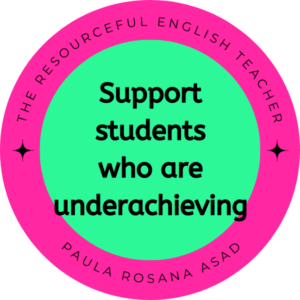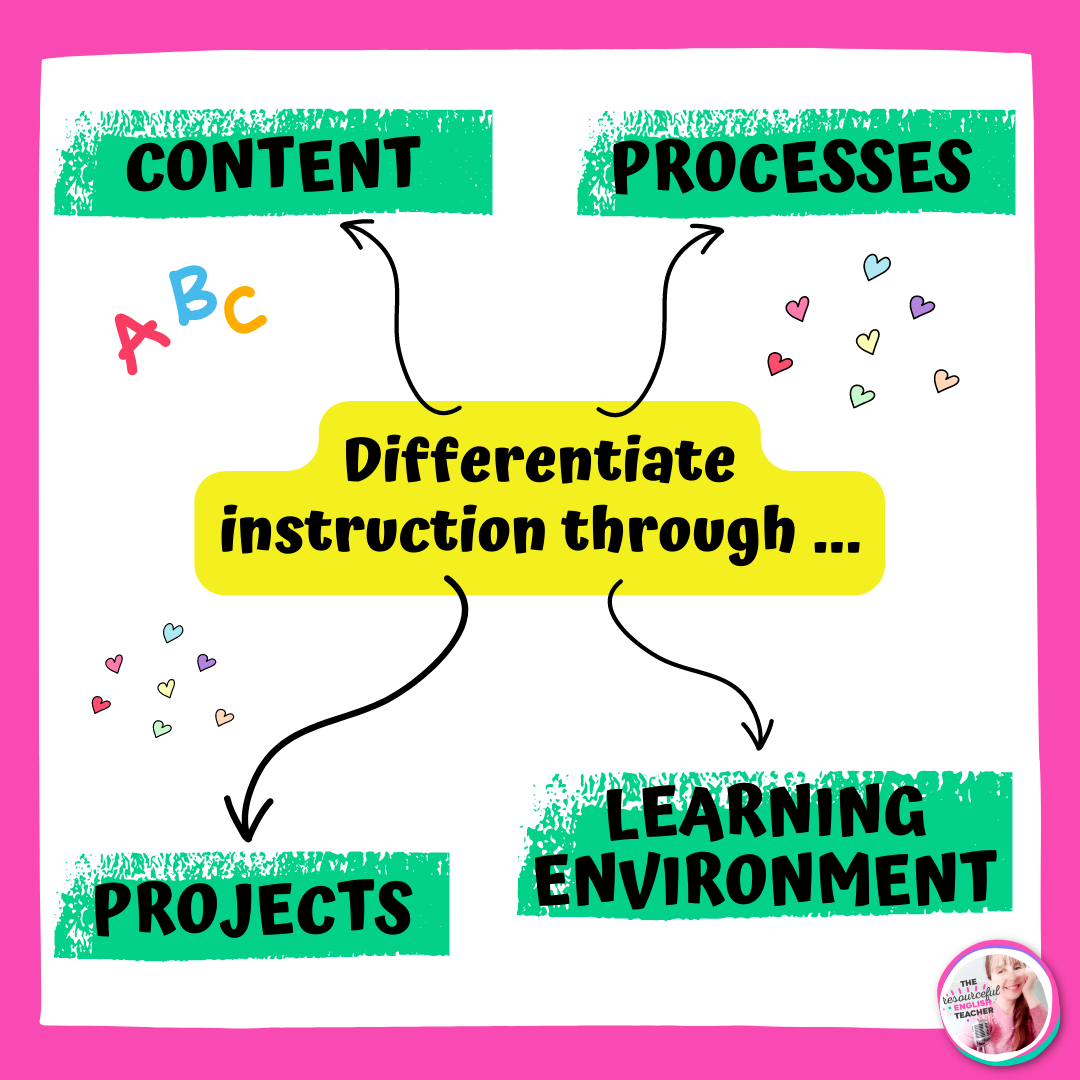Support students who are underachieving
Supporting students who are underachieving can be challenging, but the good news is… it is possible to help them grow! Reaching these underachievers sometimes is hard because they have closed their doors to learning English. But that’s just because they haven’t gotten the help they need. Let me share with you some practical tips that you can implement with those learners who need to catch up. Here we go!!!

Build a strong bond with your students
One of the most important things you can do is to build a strong relationship with your learners. This can include having regular check-ins, listening to their concerns, and being available to support them. Additionally, assessing the student’s academic needs and creating a plan to help them reach their goals is KEY for their progress.
Identify the problem and provide a solution
Spending time with your student can help you to learn what’s hindering the learning process and how you can develop a plan for the learner to reach their academic potential. In case you need to, seek expert help.
Involve parents
As educators, it is important to ensure that the lines of communication are open in order to foster a supportive environment for both teachers and parents. By doing so, you can make necessary adjustments to your teaching plan and ensure that your students are getting the most out of their learning experience.
Multiple Senses for Successful Learning
As a teacher, it’s essential to stay flexible and open to changing your lessons to best fit the needs of your students. When creating a plan for instruction, consider ways to involve multiple senses in the learning process. Doing so will help ensure the material is not just memorized but retained over time. Utilizing a range of sensory experiences will help your students remember, understand, and apply the concepts they’ve been taught, setting them up for long-term success.
Differentiate instruction
For teachers looking to effectively reach every student in their classroom, differentiating instruction is an invaluable strategy. While all learners have the same goal, instruction must be tailored to individual student preferences, interests, strengths, and struggles. Differentiating instruction can involve adjusting content, processes, projects, and the learning environment to best cater to individual students. Teachers should craft the instruction to teach students the topics they need to learn (content) and provide meaningful activities to help students make sense of the content they must learn (processes). Projects can be used to assess understanding, and the learning environment should foster a feeling of collaboration and support. Ultimately, by differentiating instruction, teachers can make sure no student is left behind.

Use PBL!
Empower your students to take ownership of their learning process with Project Based Learning! By providing them with a selection of resources from which to learn, as well as offering mini-lessons and stations that cater to small groups of students, teachers can ensure their students are getting the tailored feedback and support they need. Moreover, by recognizing and embracing their progress, you can empower your students to make decisions about how they will best present their productions. Check out all the Projects I created that make my students shine! CLICK HERE!
All in all, by providing the right tools, resources, and strategies, teachers can positively support students who are underachieving and help them to reach their potential. The key is to first recognize and then address the students’ individual needs, and to provide the support and guidance they need to be successful. We’re in this together!
All my very best.
Paula.

